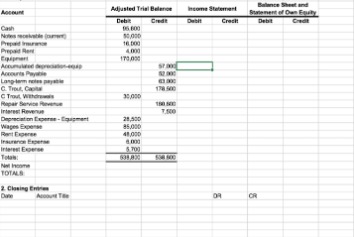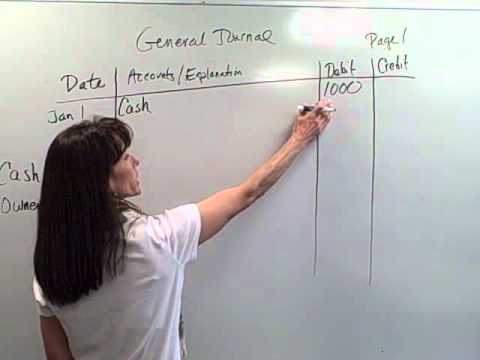
Finding transaction detail in a complex chart of accounts can quickly become challenging. This useful general ledger dashboard lets you filter by specific GL accounts like revenue, expenses, or transfers. You can also zoom in for more granularity by period and see transaction details. Spot transaction origins and contact points for smoother reconciliations and less time searching for key information. See a clear graphical view of the different areas of your business by expense. This finance dashboard lets you identify more 15 practical ways to reduce business costs and less profitable locations and departments.
However, it’s best to separate this data on different pages using Ajelix BI. Knowing what’s on hand down to the second can accounting principles definition help you spot anomalies and errors, flag sales increases, and stay on top of unexpected expenses. When you uncover these issues early, you can address them before they cause serious problems in your business. Inventory tracking without a simple dashboard like the one in this example can be prohibitively time consuming, especially as your company grows. Explore all the different ways you can use Databox to gain better data insights needed to drive better business decisions.

How can accounting dashboards help you?
Currency trading managers need a financial dashboard that provides trading volume, margin, revenue, and currency data. Plus, they need all key measures to be drillable by client segment, product group, counterparty and currency. Loan managers at consumer banks need interactive dashboards that contain loan portfolio data. This financial dashboard example allows them to discover how different regions, product and loan officers perform over time and drive the biggest impact bookkeeping terms on revenue and margins.
- This data can be included in any dashboard it’s not mandatory to create a separate dashboard.
- This ChartMogul dashboard outlines a company’s subscription and revenue details.
- Slicers, filters, and drill-throughs are some of the capabilities that can improve the interactivity of your Power BI dashboard.
- Whether you want to view your numbers according to region, channel, customer segment, or product category, the results are right at your fingertips.
- Without a business intelligence solution you can depend on, keeping track of so many key metrics can seem like an impossible task.
- In the Power BI data view, define relationships between tables to create your financial data models.
KPIs & Metrics
If you work in finance, you need to review large amounts of data every day. Keeping track of revenue, income, working capital, assets, and more can feel overwhelming. However, financial dashboards can make these tasks much easier by putting all of the key metrics you rely on in one convenient location. For example, you may need to analyze accounts receivable and accounts payable reports.
Differentiating your accounting reporting offers a litany of benefits, including helping you win and retain more customers, save time, and improve decision making. Think of it as a real-time financial snapshot, highlighting trends, anomalies, and opportunities. It’s less about the raw data and more about turning numbers into actionable insights. This subscription management dashboard outlines a company’s subscription and revenue details... A native Salesforce accounting app, Accounting Seed, provides a full 360-degree view of your business’ performance to help you and your team make the best decisions possible.
Succeed with data
Scroll down for the best financial dashboard examples for your business, plus tips to customize financial dashboards to fit your processes and accounting workflows. Displaying the dynamic CAGR (compound annual growth rate) over multiple time periods demonstrates the Time Value of Money function of the underlying finance analytics platform. A sophisticated financial dashboard can even automatically generate a narrative based on the user’s selections. A financial reporting dashboard gives a high-level visualization of KPIs such as revenue by division and revenue vs operating margin over time.
At the same time, you may also need to track balance sheet figures like assets, liabilities, and equity. An online accounting dashboard is a digital tool that provides a real-time overview of a business’s financial performance. It typically displays key metrics, charts, and graphs to help accountants analyze financial data efficiently. It makes it easy to leverage powerful finance analytics and explore and analyze in a unified fashion within the dashboard itself.
A clear, at-a-glance picture of your open billing items will help give you a firmer grasp on your company’s cash flow. In the Power BI data view, define relationships between tables to create your financial data models. Accurately establishing these connections facilitates effective data visualization and analysis.
Numerous data visualization formats, including cards, tables, maps, and charts, are available in Power BI. Axes, colors, and labels are just a few of the variables you can change to personalize the images. This performance dashboard allows financial professionals to analyze commercial loan portfolios and gain insights into improving Return on Equity and Return on Assets.
This is the best financial dashboard example to track overdue receivables and surface customers who need more attention from your team. This financial dashboard example allows analysts to evaluate the relationship between price per unit and total profit. When building a financial reporting dashboard, it is important to only include metrics that are relevant to your business. This will, in turn, allow you to quickly identify what’s working and what isn’t, and improve your strategy over time. By leveraging advanced visualization tools like Ajelix BI, accountants can create highly customized and interactive dashboards that cater to specific needs and preferences.
